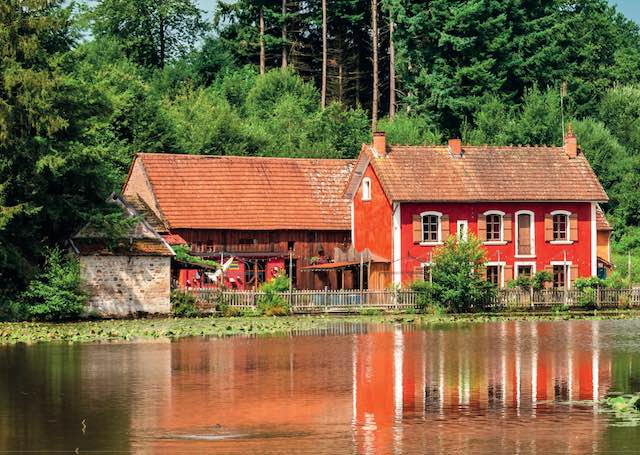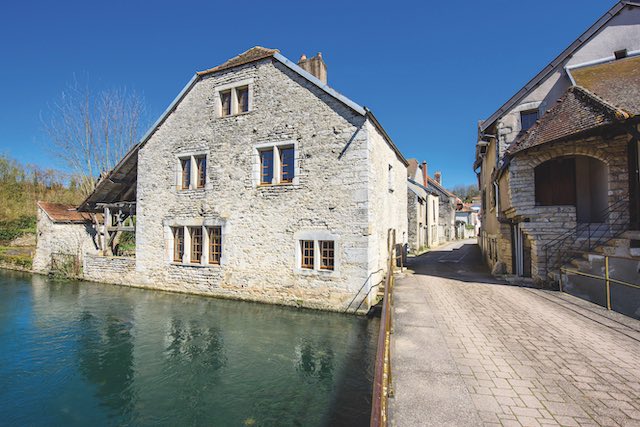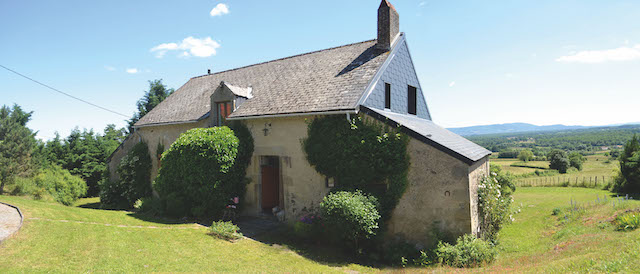Wine and More in Côte-d’Or

In the heart of Burgundy’s wine country, this sun-dappled département boasts some of the most achingly pretty towns and villages in the region – all knitted together by gorgeous vineyards, says Dominic Bliss
They are some of the greatest names in Burgundy wine. So evocative, you can almost taste them as the words trip off your tongue: Puligny-Montrachet, Gevrey-Chambertin, Meursault, Vougeot, Aloxe- Corton, Savigny-lès-Beaune…
The Côte d’Or is a short ridge of hills where the fruit of the land has totally transcended anything that the locals might have built upon it. For that reason, should you choose to buy a property here, be prepared to pay a premium: an unofficial wine tax, let’s call it.
With every year that passes, more and more wealthy Chinese are investing here, desperate to own a slice of the Burgundy wine region. And while the locals are
inevitably sniffy about foreign investment, most of them are more than willing to bite their tongues… for the right price, of course.
As the famous wine writer Hugh Johnson says in his World Atlas of Wine: “A Burgundian understandably feels a certain reverence towards the rather commonplace-looking ridge of the Côte d’Or, like the Athenians towards an unknown god.”
Côte-d’Or’s Place in France
Right from the start, there’s a geographical (and grammatical) ambiguity that needs clarifying. Côte d’Or (without the hyphen) is the name of the limestone escarpment that stretches 30 miles southwest from the city of Dijon down to Chagny, taking in such towns and villages as Gevrey-Chambertin, Chambolle-Musigny, Vosne-Romanée, Nuits-Saint-Georges, Ladoix-Serrigny, Aloxe-Corton, Beaune, Bligny-lès-Beaune, Meursault, Puligny-Montrachet and Santenay. Côte-d’Or (with the hyphen), on the other hand, is the département that surrounds this escarpment and comprises places such as Dijon in the centre (the prefecture and biggest town with a population of 154,000), Montbard to the northwest, Châtillon-sur-Seine in the north and Auxonne in the east.
While this article focuses mainly on the area along and either side of the escarpment, it does include references to the wider département as well.
Most agree that Côte-d’Or owes its name, meaning golden slope, to the golden hue of the vineyards at harvest time. But there is a theory that it’s actually an abbreviation of Côte d’Orient, meaning eastern slope, since most of the vineyards face towards the rising sun.
The Côte-d’Or is split into the Côte de Beaune in the south and the smaller Côte de Nuits in the north. Any property-searcher should be prepared to drive many miles up and down a 60km stretch of road called the Route des Grands Crus, which runs along the foot of the ridge. It takes in 38 villages and towns – including all the major wine centres – giving you an excellent overview of available property.
If you need to cover ground more quickly, you can zip along the A31, which runs parallel to the Côte d’Or on the eastern side, or use the railway (also parallel), serving stations from Dijon to Chagny.
Dijon itself is well served by France’s motorway network. As well as the A31, there’s the A6 leading to Paris and the A36 heading east. Ryanair runs a service from London Stansted to Dole airport, 30 miles from Beaune.
If you need any proof of just how special the vineyards of Côte-d’Or are, in 2015 UNESCO designated them a World Heritage Site, saying: “This cultural landscape consists of two parts. Firstly, the vineyards and associated production units including villages and the town of Beaune, which together represent the commercial dimension of the production system. The second part includes the historic centre of Dijon, which embodies the political regulatory impetus that gave birth to the [viticulture] system. The site is an outstanding example of grape cultivation and wine production developed since the High Middle Ages.” UNESCO explains how the vineyards were shaped by human labour into tiny parcels of land, giving them much of their charm. “Many of these parcels or climats are still clearly identifiable in the landscape, by paths, stone walls, fences or meurgers [piles of stones]. They are today a unique and living conservatory of centuries-old traditions, an expression of the diversity of its terroirs and producer of wines, the excellence of which is recognised worldwide.”

The State of the Property Market in Côte-d’Or
Any search for property along the Côte d’Or escarpment should start in the town of Beaune, the capital of this wine region. Founded on the site of a Roman fort, and named after a Gaulish god called Belen, this walled town (which has battlements, ramparts and a moat) eats, lives, breathes and – of course – drinks (in huge quantities) wine. With so many cellars lying beneath its streets, you’re never more than a few metres away from some vintage or another.
Interesting landmarks in the town include the old market (les halles), the hospices, the clock tower and the church of Notre-Dame. Many of Beaune’s buildings are adorned with roofs made of multi-coloured, glazed tiles. Known as polychrome roofs, these date from the Middle Ages when the tiles were produced in factories south of Dijon. Originally reserved for cathedrals and royal residences, they eventually became status symbols for the houses of the haute bourgeoisie.
If you can drag yourself away from the myriad wine-tasting opportunities, drop in on one of the
many property agents about town. Benjamin Haas is manager and founder of property agency France4U in Meursault, a few kilometres southwest of Beaune.
“The area including the Côte de Beaune and the Côte de Nuits is the golden mile of the Burgundy area,” he says. “Prices for property here are at their highest, as there is a large demand for every constructible space.” But, as he stresses, there is very little space to build. “That’s because villages cannot grow as they are surrounded by vines,” he adds. “These deliver much more value than a stone house over the same space.”

Property Prices
According to MeilleursAgents, property prices across the Côte-d’Or département are €1,601 per square metre for houses and €1,878 per square metre for apartments. In general, they have remained fairly stable since the 2007 financial crisis.
When it comes to individual towns, Fontaine-lès-Dijon (in the northern suburbs of Dijon) commands the highest house prices (€2,565 per square metre), followed closely by Dijon itself (€2,423), and then other Dijon suburbs such as Talant (€2,402), Saint-Apollinaire (€2,236), Quetigny (€2,075) and Chevigny-Saint-Sauveur (€2,066). Next comes Beaune, at €2,014 per square metre.
- Can’t wait to be there? Having found out a little more about Côte-d’Or, do you feel that this is the place for you? If so, browse our property pages and if you’d like some more in-depth help with your house-hunt, give our property team a call on +44 (0)203 773 2824 – it could be the start of your new life in France!
Share to: Facebook Twitter LinkedIn Email
More in Buy, Buying, Côte-d’Or, department, Guide, property
Leave a reply
Your email address will not be published. Required fields are marked *



